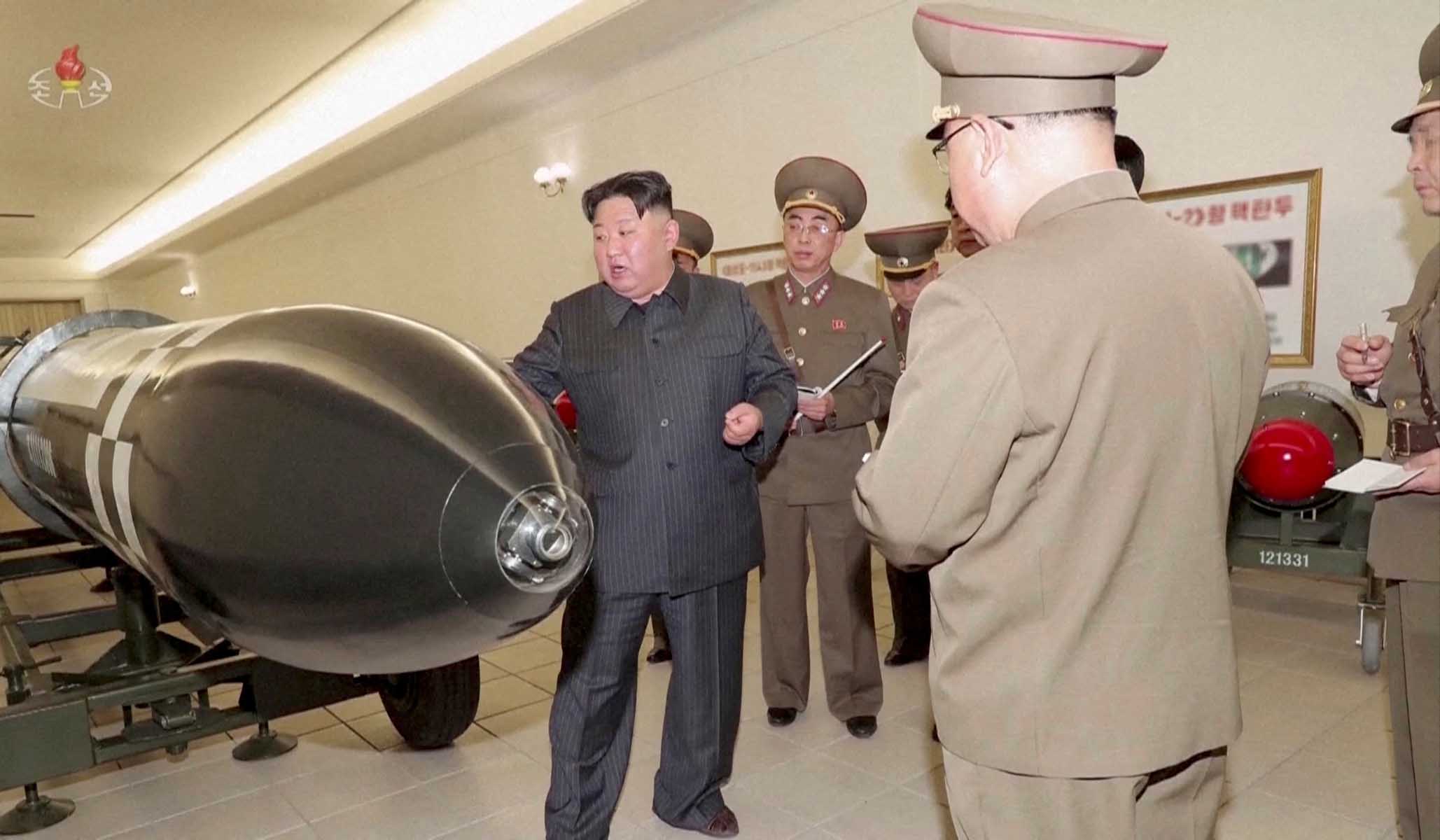


NRPLUS MEMBER ARTICLE L ast month, President Biden hosted his South Korean counterpart, President Yoon Suk Yeol, at the White House for a state dinner to celebrate the 70th anniversary of the alliance between the United States and the Republic of Korea. During Yoon’s visit, the two allies unveiled the Washington Declaration, a bilateral statement to meet the challenge of the shifting security landscape on the Korean Peninsula. The statement reiterates America’s commitment to South Korea’s defense, bolstering our extended deterrence, in return for an implicit guarantee that the country will remain a non-nuclear state, despite the growing call in Seoul for the development of autonomous nuclear capabilities. As per the agreement, the U.S. will deploy nuclear-armed submarines to South Korea for the first time in decades.
Amidst these well-received affirmations of friendship and jovial renditions of “American Pie,” the specter of the North Korean nuclear threat loomed large. During a joint news conference in the Rose Garden, Biden said, “Look, a nuclear attack by North Korea against the United States or its allies or . . . partners is unacceptable and will result in the end of whatever regime, were it to take such an action.”
Since the end of the Korean War, U.S.–North Korean relations have been marked by periods of rancorous discord followed by futile attempts at diplomacy. This pattern of cooling and thawing has continued almost unabated for the better part of the last 70 years.
Throughout the Cold War, the U.S. and North Korea remained bitter adversaries. Tensions with Washington spiked in the 1980s and 1990s as North Korea sought to develop nuclear weapons. In response, the U.S. pursued a policy of sanctions and isolation against North Korea. In the early 2000s, there were signs of a thaw in U.S.–North Korean relations, with North Korean leader Kim Jong-il holding a summit with South Korean president Kim Dae-Jung. But this longshot attempt at rapprochement turned out to be all for naught.
In 2006, North Korea conducted its first nuclear test, which drew international condemnation and led to the imposition of further sanctions. In 2017, hostilities ratcheted up, with President Trump warning the North Koreans that “they will be met fire and fury like the world has never seen” if threats continued. Then, in a stunning about-face, Trump held a historic summit with Kim Jong-un in Singapore, which produced a joint statement committing to denuclearization of the Korean peninsula. All trends appeared to be pointing in a positive direction, with some even suggesting that our post-war relationship with Vietnam could serve as a model for North Korea. But now, dissension between the U.S. and North Korea has returned; America’s relationship with the rogue communist state is seemingly stuck in the 1950s.
With North Korea ramping up missile tests, launching a record number of projectiles last year, and having recently tested a solid-fuel long-range rocket, the question now is: How can we extricate ourselves from this vicious cycle before the escalatory dynamics spin out of control? Some have recommended we adopt a more dovish approach. Writing in the New York Times last year, Jeffrey Lewis, an arms-control expert at the James Martin Center for Non-Proliferation Studies, suggested we drop our insistence on unilateral North Korean disarmament as a precondition for concessions like sanctions relief. Lewis is one voice in a chorus of Korea specialists claiming that the maximum-pressure campaign adopted by successive administrations has failed and that the U.S. must shift from a denuclearization strategy to one of deterrence.
America’s North Korea strategy has undoubtedly fallen short, but there’s one glaring problem with this diagnosis: U.S. policy has been anything but consistent. “We haven’t had just one strategy,” Zach Cooper, Asia scholar at the American Enterprise Institute (AEI), said. “Within administrations, we’ve seen teams try various strategies to no avail.” Indeed, Trump did a complete 180 on North Korea midway through his presidency. The bigger picture is that for decades we’ve oscillated from olive branches and sunshine to sticks and carrots. The only constant in America’s North Korea posture has been incoherence.
That’s why other geopolitical observers have offered a different way forward. Nicholas Eberstadt, a North Korea scholar also at AEI, doesn’t believe that we have “even started to go about [maximum pressure] seriously.” His recommendation is that we should. That “can begin by enforcing the sanctions on the books and penalizing violators and sanctions busters, starting with the governments of China and Russia.” There are other existing sanctions that can also be enforced, to significant effect. “The UN Security Council has already voted into force very far-reaching sanctions on [North Korea] because of its repeated violations of the Treaty on the Non-Proliferation of Nuclear Weapons,” Eberstadt said. “We don’t need more sanctions. All we need to do is enforce what’s already there.”
As North Korea continues to advance its nuclear and missile programs, the U.S. faces a daunting challenge. While there is no easy solution, the U.S. cannot simply continue with the same fluctuation that has characterized its North Korea policy for decades. To truly break the cycle, the U.S. must adopt a more coherent and consistent approach, one that prioritizes deterrence and leverages existing international sanctions to pressure North Korea and its enablers. Only then can the U.S. hope to find a way out of the current impasse and build sustainable peace on the Korean Peninsula.
